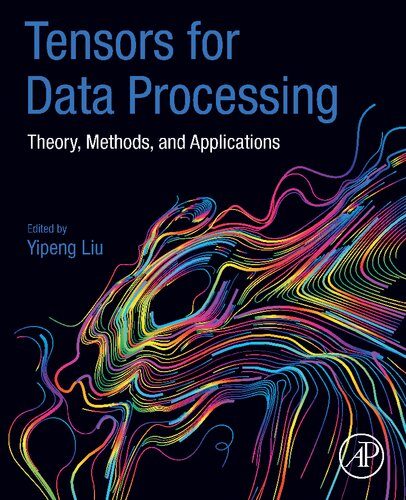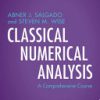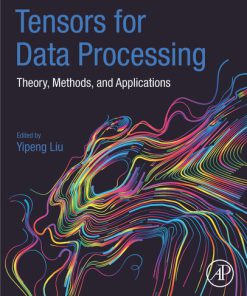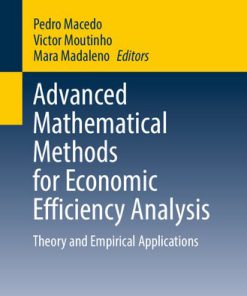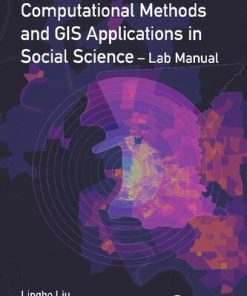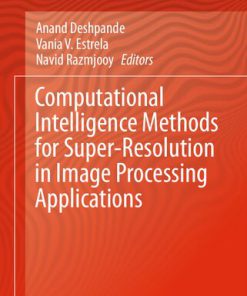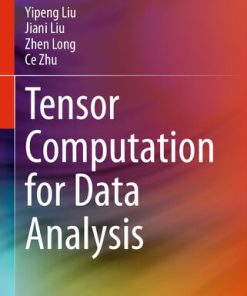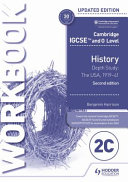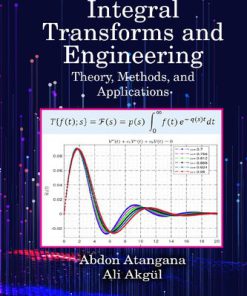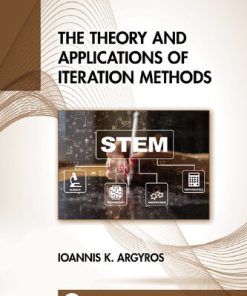Tensors for Data Processing: Theory, Methods, and Applications 1st Edition by Yipeng 9780323859653 0323859658
$50.00 Original price was: $50.00.$25.00Current price is: $25.00.
Tensors for Data Processing: Theory, Methods, and Applications 1st Edition Yipeng Liu (Ed.) – Ebook Instant Download/Delivery ISBN(s): 9780323859653, 0323859658
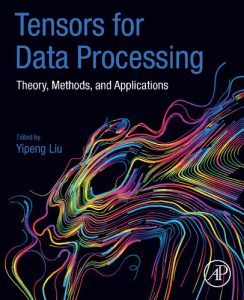
Product details:
- ISBN 10: 0323859658
- ISBN 13: 9780323859653
- Author: Yipeng
Tensors for Data Processing
Theory, Methods, and Applications
Tensors for Data Processing: Theory, Methods and Applications presents both classical and state-of-the-art methods on tensor computation for data processing, covering computation theories, processing methods, computing and engineering applications, with an emphasis on techniques for data processing. This reference is ideal for students, researchers and industry developers who want to understand and use tensor-based data processing theories and methods.
As a higher-order generalization of a matrix, tensor-based processing can avoid multi-linear data structure loss that occurs in classical matrix-based data processing methods. This move from matrix to tensors is beneficial for many diverse application areas, including signal processing, computer science, acoustics, neuroscience, communication, medical engineering, seismology, psychometric, chemometrics, biometric, quantum physics and quantum chemistry.
- Provides a complete reference on classical and state-of-the-art tensor-based methods for data processing
- Includes a wide range of applications from different disciplines
- Gives guidance for their application
Table contents:
Chapter 1: Tensor decompositions: computations, applications, and challenges
Abstract
1.1. Introduction
1.2. Tensor operations
1.3. Tensor decompositions
1.4. Tensor processing techniques
1.5. Challenges
References
Chapter 2: Transform-based tensor singular value decomposition in multidimensional image recovery
Abstract
2.1. Introduction
2.2. Recent advances of the tensor singular value decomposition
2.3. Transform-based t-SVD
2.4. Numerical experiments
2.5. Conclusions and new guidelines
References
Chapter 3: Partensor
Abstract
Acknowledgement
3.1. Introduction
3.2. Tensor decomposition
3.3. Tensor decomposition with missing elements
3.4. Distributed memory implementations
3.5. Numerical experiments
3.6. Conclusion
References
Chapter 4: A Riemannian approach to low-rank tensor learning
Abstract
4.1. Introduction
4.2. A brief introduction to Riemannian optimization
4.3. Riemannian Tucker manifold geometry
4.4. Algorithms for tensor learning problems
4.5. Experiments
4.6. Conclusion
References
Chapter 5: Generalized thresholding for low-rank tensor recovery: approaches based on model and learning
Abstract
5.1. Introduction
5.2. Tensor singular value thresholding
5.3. Thresholding based low-rank tensor recovery
5.4. Generalized thresholding algorithms with learning
5.5. Numerical examples
5.6. Conclusion
References
Chapter 6: Tensor principal component analysis
Abstract
6.1. Introduction
6.2. Notations and preliminaries
6.3. Tensor PCA for Gaussian-noisy data
6.4. Tensor PCA for sparsely corrupted data
6.5. Tensor PCA for outlier-corrupted data
6.6. Other tensor PCA methods
6.7. Future work
6.8. Summary
References
Chapter 7: Tensors for deep learning theory
Abstract
7.1. Introduction
7.2. Bounding a function’s expressivity via tensorization
7.3. A case study: self-attention networks
7.4. Convolutional and recurrent networks
7.5. Conclusion
References
Chapter 8: Tensor network algorithms for image classification
Abstract
8.1. Introduction
8.2. Background
8.3. Tensorial extensions of support vector machine
8.4. Tensorial extension of logistic regression
8.5. Conclusion
References
Chapter 9: High-performance tensor decompositions for compressing and accelerating deep neural networks
Abstract
9.1. Introduction and motivation
9.2. Deep neural networks
9.3. Tensor networks and their decompositions
9.4. Compressing deep neural networks
9.5. Experiments and future directions
References
Chapter 10: Coupled tensor decompositions for data fusion
Abstract
Acknowledgements
10.1. Introduction
10.2. What is data fusion?
10.3. Decompositions in data fusion
10.4. Applications of tensor-based data fusion
10.5. Fusion of EEG and fMRI: a case study
10.6. Data fusion demos
10.7. Conclusion and prospects
References
Chapter 11: Tensor methods for low-level vision
Abstract
Acknowledgements
11.1. Low-level vision and signal reconstruction
11.2. Methods using raw tensor structure
11.3. Methods using tensorization
11.4. Examples of low-level vision applications
11.5. Remarks
References
Chapter 12: Tensors for neuroimaging
Abstract
12.1. Introduction
12.2. Neuroimaging modalities
12.3. Multidimensionality of the brain
12.4. Tensor decomposition structures
12.5. Applications of tensors in neuroimaging
12.6. Future challenges
12.7. Conclusion
References
Chapter 13: Tensor representation for remote sensing images
Abstract
13.1. Introduction
13.2. Optical remote sensing: HSI and MSI fusion
13.3. Polarimetric synthetic aperture radar: feature extraction
References
Chapter 14: Structured tensor train decomposition for speeding up kernel-based learning
Abstract
14.1. Introduction
14.2. Notations and algebraic background
14.3. Standard tensor decompositions
14.4. Dimensionality reduction based on a train of low-order tensors
14.5. Tensor train algorithm
14.6. Kernel-based classification of high-order tensors
14.7. Experiments
14.8. Conclusion
People also search:
tensors for data processing: theory, methods
tensors for data processing theory methods and applications
what is data processing techniques
types of data processing methods
what are the three methods of data processing
You may also like…
Computers - Organization and Data Processing
Business & Economics - Mathematical Economics
Earth Sciences - Geodesy
Computers - Artificial Intelligence (AI)
Engineering
Earth Sciences - Geophysics
Environmental Data Analysis Methods and Applications 2nd Edition Zhihua Zhang
Education Studies & Teaching - Studying & Test Preparation
Mathematics - Applied Mathematics
Integral Transforms and Engineering: Theory, Methods, and Applications 1st Edition Abdon Atangana
Mathematics - Numerical Analysis
The Theory and Applications of Iteration Methods 2nd Edition by Argyros 0367651017 9780367651015

